Kiwis are small brown birds native to the island of New Zealand. Members of the genus Apteryx in the family Apterygidae, kiwis are ratites and therefore closely related to ostriches, emus, rheas, and cassowaries. There are five extant species of kiwi, all of which feature grayish-brown feathers, a long decurved bill, and short legs. Here are 10 incredible kiwi facts that demonstrate what makes these little birds so fascinating.
1. The Term Kiwi is Multifaceted, Historic, and Hotly Contested

The Kiwi is a flightless bird with tiny wings and loose feathers.
©iStock.com/GlobalP
Before we dive into any other kiwi facts, we should first explore the meaning of the word kiwi. The word kiwi not only refers to the bird but also to people from New Zealand as well as the kiwifruit or Chinese gooseberry. Today, the word kiwi serves practically as a stand-in for the island of New Zealand, its people, and its culture.
As for the source of the word kiwi, scientists still can’t agree on its origin. In the Maōri language, the word kiwi supposedly derives from the sound of the kiwi bird’s call. However, other linguists contend that kiwi comes from the ancient Polynesian word for the bristle-thighed curlew, a migratory bird found on Pacific islands that closely resembles the kiwi.
2. Kiwis Cannot Fly

Kiwis cannot fly.
©Lakeview Images/Shutterstock.com
This next entry is likely the most well-known of all the kiwi facts to appear on this list. As you may or may not know, kiwis cannot fly. Like its much larger ratite cousins, kiwis possess no keel on the sternum, which serves to anchor the wing muscles of birds. As a result, they lack the physical structure required to generate enough force to lift their bodies off the ground.
Moreover, the wings of a kiwi are much smaller compared to most birds. In fact, they are so small that they appear practically invisible to the naked eye as they lie buried under kiwis’ hair-like feathers. Despite their lack of a need for wings, kiwis retained this quintessential avian feature throughout their evolution as they adapted to life on the ground.
3. Kiwis Share More in Common With Mammals Than Most Birds
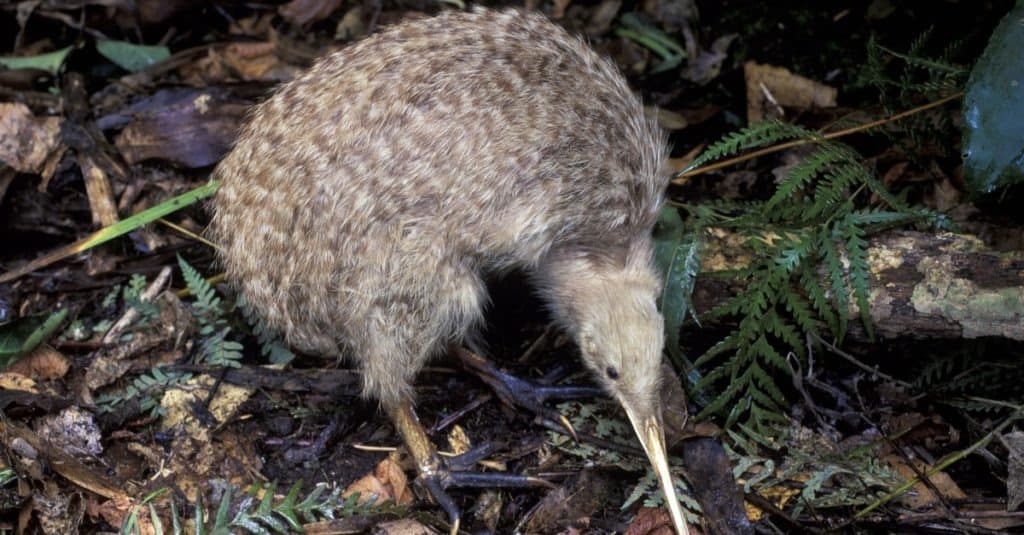
Kiwis have dense bones, small eyes, and bristle-like feathers.
©John Carnemolla/Shutterstock.com
While kiwis belong to the class Aves, which contains all the world’s bird species, they share more in common with mammals than most other birds. Unlike most birds and like some mammals, they possess poor eyesight. Their limited field of vision is largely due to their small eyes, as they have the smallest eyes of any bird species.
You can also include bone structure among the traits that kiwis share with mammals. While almost all birds possess hollow bones, which reduces their weight and makes flight possible, kiwis have dense bones full of marrow. Additionally, their feathers differ from other birds and more closely resemble bristle-like hairs than true feathers.
4. Kiwis Have An Excellent Sense of Smell
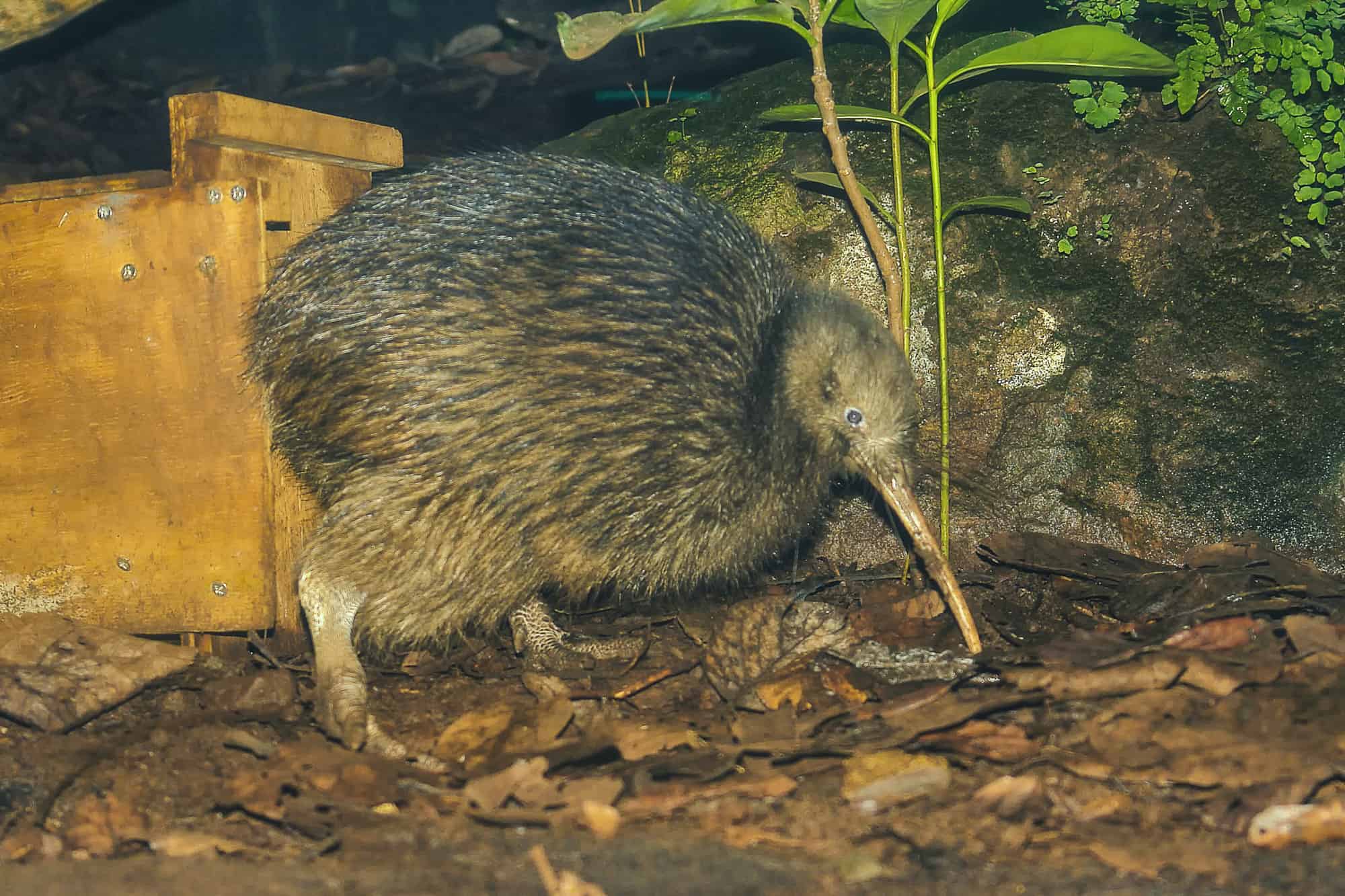
Kiwis have a great sense of smell.
©Arthur Simoes/Shutterstock.com
Next up we have what may be the most surprising entry on our list of kiwi facts. Generally speaking, birds aren’t known for having a superior sense of smell. Researchers long believed that most birds sacrificed their sense of smell in exchange for excellent eyesight. However, new evidence suggests that some birds possess a keen sense of smell, and the kiwi may rank among the best when it comes to olfactory prowess.
Kiwis possess a highly-developed sense of smell. As a matter of fact, they are the only birds with nostrils, which are located at the end of their bills. Using only their sense of smell, kiwis can locate worms and insects located underground. While they may also use auditory or tactical tools to help them find food, smell likely serves as their primary sense.
5. Kiwis Can Live For a Long Time
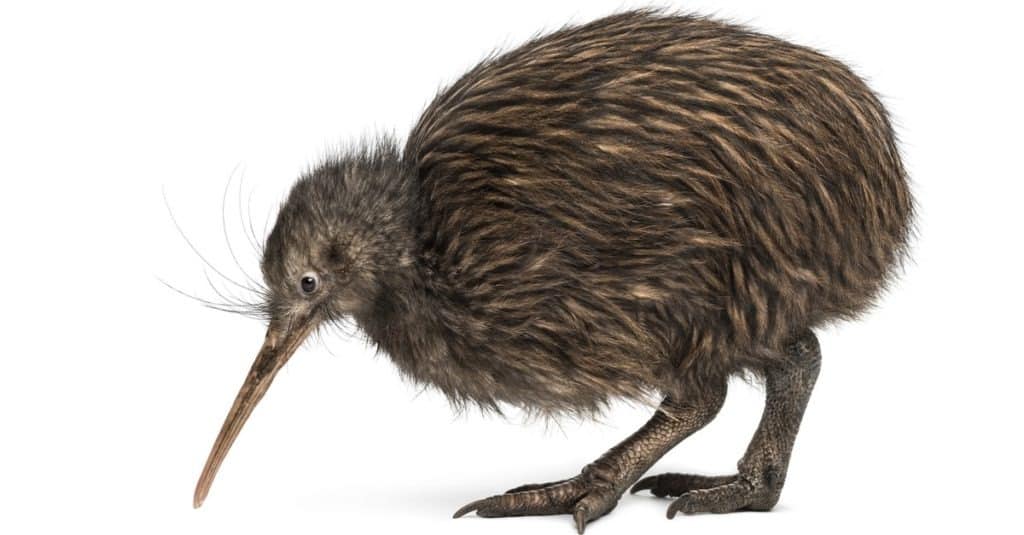
Kiwis can live between 25 and 50 years old.
©Eric Isselee/Shutterstock.com
Many birds are blessed with long lifespans. For example, parrots often live up to 70 years old and may be able to reach up to 100 years old. Scientists believe that birds’ high metabolic rate, body temperature, and other genetic factors contribute to their extended lifespan. They also suffer less oxidative damage than most mammals, which could also allow them to age more slowly.
Although they are land-based, kiwis are also quite long-lived. If they can reach maturity and avoid predators, kiwis can live anywhere from 25 to 50 years. That said, few kiwis ever live this long in the wild, although it’s possible that kiwis may be able to live even longer given the right environmental conditions.
6. Most Kiwis Mate For Life
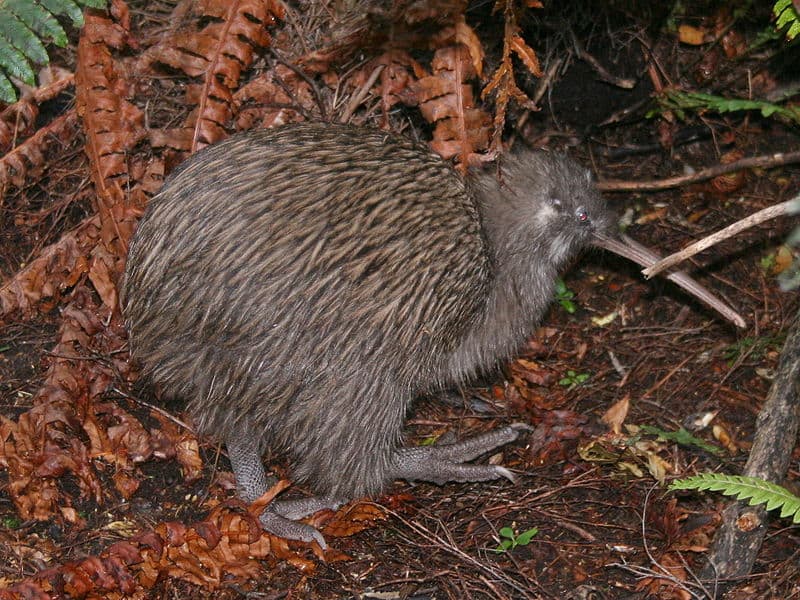
Tokoeka (Apteryx australis), Stewart Island, New Zealand
Here’s a heartwarming bit of information for those of you who love romantic kiwi facts. On average, male kiwis reach sexual maturity around 18 months old while female kiwis become sexually mature at 3 years old. Once kiwis are ready to mate, a male will follow a female around and grunt until she returns his affections. Many of these partnerships endure for years, and it’s typical for kiwis to mate for life.
Although many kiwis are monogamous and stay together for years, there are exceptions to this rule. Apparently, even kiwis struggle to keep the fire going after so long and begin to develop wandering eyes. Within established couples, female kiwis are more likely than males to end the relationship, as they often end the partnership if they find a male they like better than their current mate.
7. Female Kiwis Lay Giant Eggs in Relation to Their Size
Few kiwi facts are as mind-boggling as this next entry. Female kiwis are not particularly large, with most mature females weighing between 2.9 and 7.3 pounds and standing from 9.8 to 18 inches tall. Despite their small stature, female kiwis lay absolutely massive eggs.
As a matter of fact, kiwis lay some of the largest eggs in proportion to the body size of any bird in the world. An average egg can measure up to 20% of the female’s body weight. In terms of equivalency, this would be the same as a human giving birth to a typical 6-year-old child. The eggs are so large that the female is usually unable to eat and must abstain from food until she lays them.
8. Kiwi Chicks Hatch Fully Developed
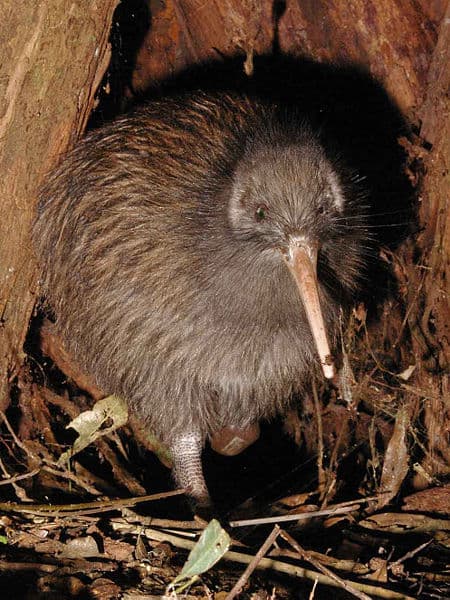
North Island brown kiwi (Apteryx mantelli)
©Maungatautari Ecological Island Trust – Public Domain
Most bird species produce offspring that are underdeveloped when they hatch. As a result, these infant birds must rely on their parents to survive for the first few days or weeks of life. On the other end of the spectrum, you have kiwis, which give birth to relatively independent and developed offspring.
Kiwi chicks hatch with all their feathers and the basic instincts they need to find food. During the first few days of life, they sustain themselves on the nutritious yolk sacs attached to their bodies. Although they possess all the skills they need to live independently, young kiwis often remain close to their parents for the first few years of life.
9. Kiwis Are Instinctive Eaters
As we just mentioned above, kiwis are instinctive eaters. Chicks don’t rely on their parents to feed them or teach them how to find food. Instead, they possess all the skills they need to locate food upon hatching.
Kiwis are omnivores that will readily eat anything that they can catch. That said, worms and insects make up the bulk of their diet including woodlice, centipedes, snails, slugs, and spiders. They will also eat berries, seeds, and other plant materials to sustain themselves. Kiwis are nocturnal and typically only come out at night to feed. Given their poor eyesight, they rely on their excellent sense of smell and sensitive whiskers to help them find food buried in the soil or hidden in vegetation.
10. Most Kiwi Populations Are in Decline
This last entry on our list of kiwi facts is also the most unsettling fact on this list. Although kiwis have a long lifespan and are extremely important to the culture of New Zealand most populations have steadily declined over the past few decades. Unfortunately, only around 5 to 10% of kiwi chicks survive to reach adulthood in the wild.
Small mammalian predators such as stoats, ferrets, and cats pose the greatest threat to kiwis. Kiwis had no natural predators until colonists arrived in New Zealand in the 18th century. The arrival of stoats and other predators subsequently decimated kiwi populations. Currently, the IUCN lists four species as Vulnerable and one as Near Threatened.
Up Next
- 10 Birds That Can’t Fly
- 10 Flightless Birds That Are Extinct
- Which Animal Lays The Largest Egg In The World?
The photo featured at the top of this post is © Vee Snijders/Shutterstock.com
Thank you for reading! Have some feedback for us? Contact the AZ Animals editorial team.







